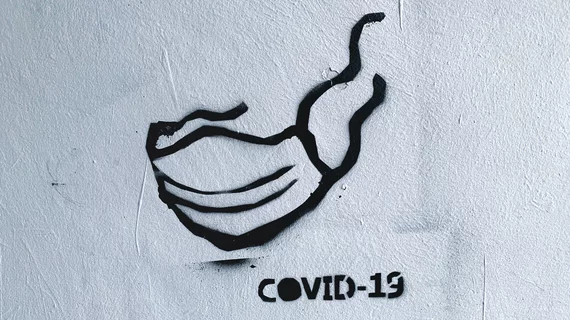Imaging COVID-19 a year later: Recovery is possible even in severe cases
The long-term consequences of COVID-19 infection still remain a mystery. But researchers on Tuesday presented some initial evidence that those with severe illness can make a complete recovery.
The pair of radiologists based in China shared the case of a 55-year-old woman diagnosed with a serious case of the coronavirus back in February 2020.
She initially complained of chills, fever and weakness, and unenhanced chest CT revealed diffuse ground-glass opacities in bilateral lungs, predominately in the upper area, they explained in Radiology. Following both antiviral and antibiotic treatments, her nine-day follow-up scan showed some improvement.
The woman continued treatment for 30 days in an isolation center and was later discharged. One full year afterward, she had no discomfort and her chest CT showed normal lung parenchyma.
As is the case with other acute respiratory distress syndromes, patients with severe COVID-19 may sustain permanent lung damage, including scarring, the authors noted.
“However, as was found here, a return to normal lung density and morphology may also be observed,” Lei Tang and Xianchun Zeng, both with the Department of Radiology at Guizhou Provincial People's Hospital in China, explained March 30.
Back in March of last year, imaging experts began to notice CT abnormalities in patients diagnosed with the novel virus up until they were discharged. As early as March 20, 2020, Wuhan, China, researchers reported an “overwhelming majority” of patients had mild to significant lung abnormalities on their chest scans. Among 90 individuals with coronavirus-related pneumonia, 94% still showed residual findings, most often ground-glass opacities, according to one study.
And lung problems are not the only lasting effects post-recovery. A JAMA Cardiology investigation published last summer found up to 78% of 100 patients had lingering cardiac injuries on their MRI scans.
A more recent study released in February found CT, MRI and ultrasound evidence of long-lasting, “bizarre” muscle pain in people long-recovered from COVID-19. Doctors labeled their findings as the first to pinpoint the origins of long-term and sometimes random pain.
Most agree that it will take time and more research to heal these COVID-19 long-haulers. To help, University of Southern California experts earlier this week called on radiologists to utilize chest X-rays in high-risk patients to better track their condition over time and enhance treatment decisions.
Read the entire case study published March 30 in Radiology here, including corresponding lung images.

